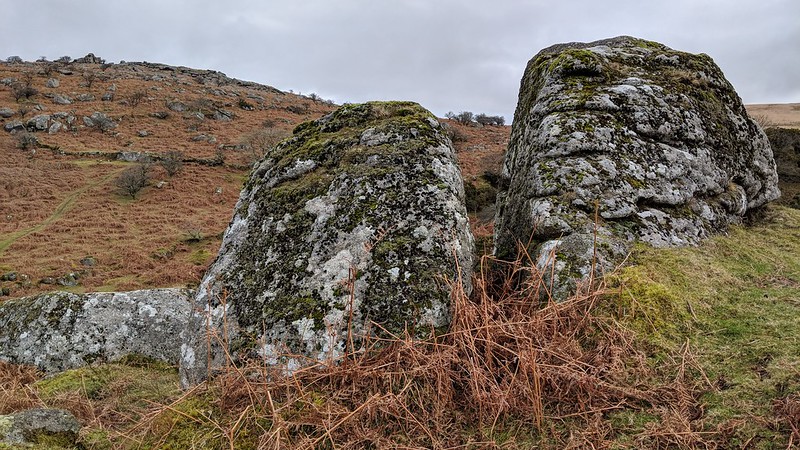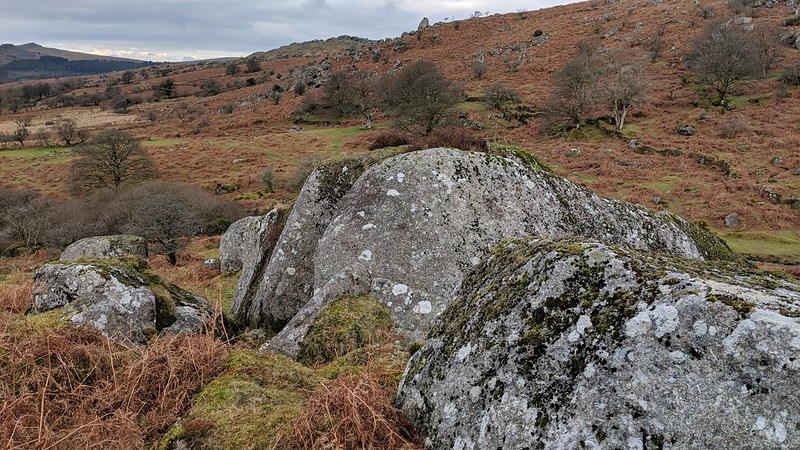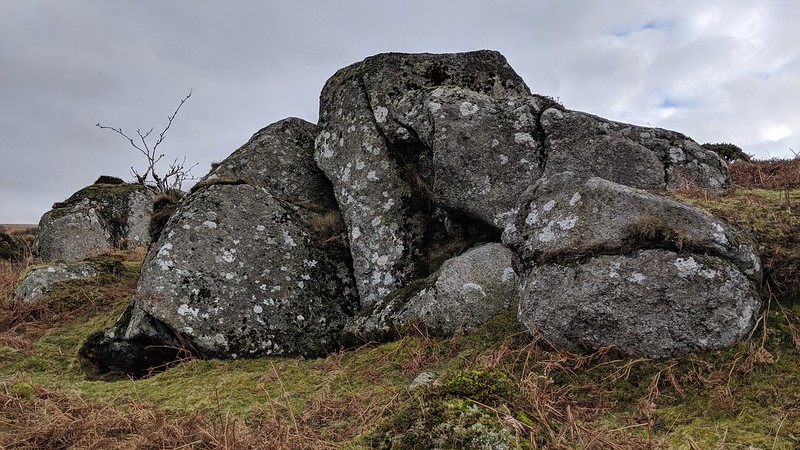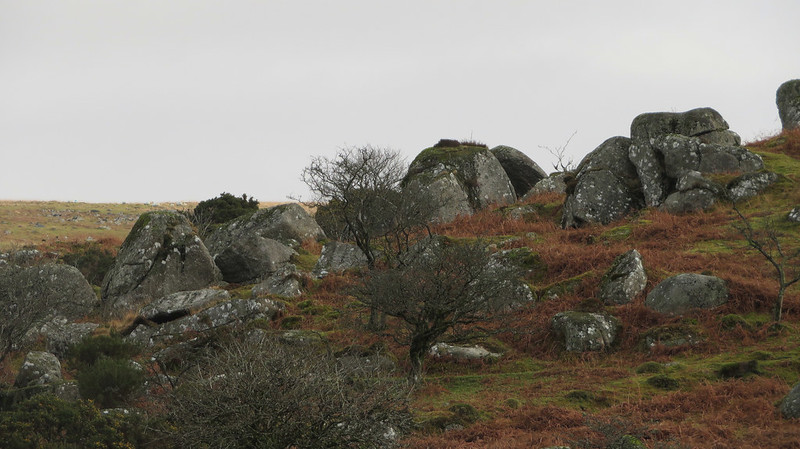TORS OF DARTMOOR
a database of both lesser- & well-known rocks and outcrops
Deancombe RocksCombeshead Rocks  At the head of the Deancombe Valley, where the Combeshead and Deancombe Brooks converge to continue their journey down towards Burrator Reservoir as Narrator Brook, is a sprawling set of large boulders. The rocks here are clustered together on a promontory of land which has been so heavily scarred over the ages by industry that it is fortunate that some of the boulders remain in situ. There are deep gullies here that are remnants of the once tin mine known as Combeshead, that is described in the Dartmoor HER as: "comprising a wheelpit, building, two probable settling pits, three mortar stones, and an adit. The mine was active in the first half of the 19th century, but it is possible that the site may have been worked on and off since the medieval period."  The valley of Deancombe was once home to a number of small farming communities at Outholme, Deancombe and Combeshead, but all of these were abandoned after the completion of Burrator Reservoir in 1898. Plymouth Corporation, who owned the site, claimed that the farmers, despite having lived here for generations, would create a risk of pollution into Plymouth's primary water supply and they were given notice to evict from their properties with no compensation. One man who refused this order was William (Bill) Pengelly of Combeshead Farm, which lay across the Brook from the rocks. We learn from Paul Rendell (PR, 2023) that Bill vehemently stated: "the only way you are going to get me to leave is in my coffin." PR continues: "After a lengthy debate, he was allowed to stay on the farm, but he had to get rid of his farm animals. He was allowed to grow crops to eat but the soil was not good enough for this. Potatoes were grown in one of the fields many years ago but that is all. He stayed there rent-free until he died in December 1931, at the age of 90."  The Rocks afford tremendous views of the valley and to the distinctive Cuckoo Rock, that presents its best aspect from here and the mass of boulders beneath Combshead Tor can also be admired in their entirety. There are a number of caves in the ground immediately to the east of Deancombe Rocks and PR describes these with NGRs courtesy of Max Piper (MP). Perhaps the most intriguing feature is a man-made structure known as a beehive hut at SX 58711 68432, erected during the tin mining era as a store for tools.  In 2019 the name of 'Deancombe Rocks' was suggested for this significant pile by MP, with other people concurring. However, it first appears in print in the book Exploring Around Burrator (2023); but there is another possible (and perfectly suitable) appellation of Combeshead Rocks, suggested by former Dartmoor Ranger Paul Glanville, as the tin workings did belong to Combeshead Mine as well as the nearby same named ruined farmstead being closest to the site.
| ||||||||||||||||||||||||||||||